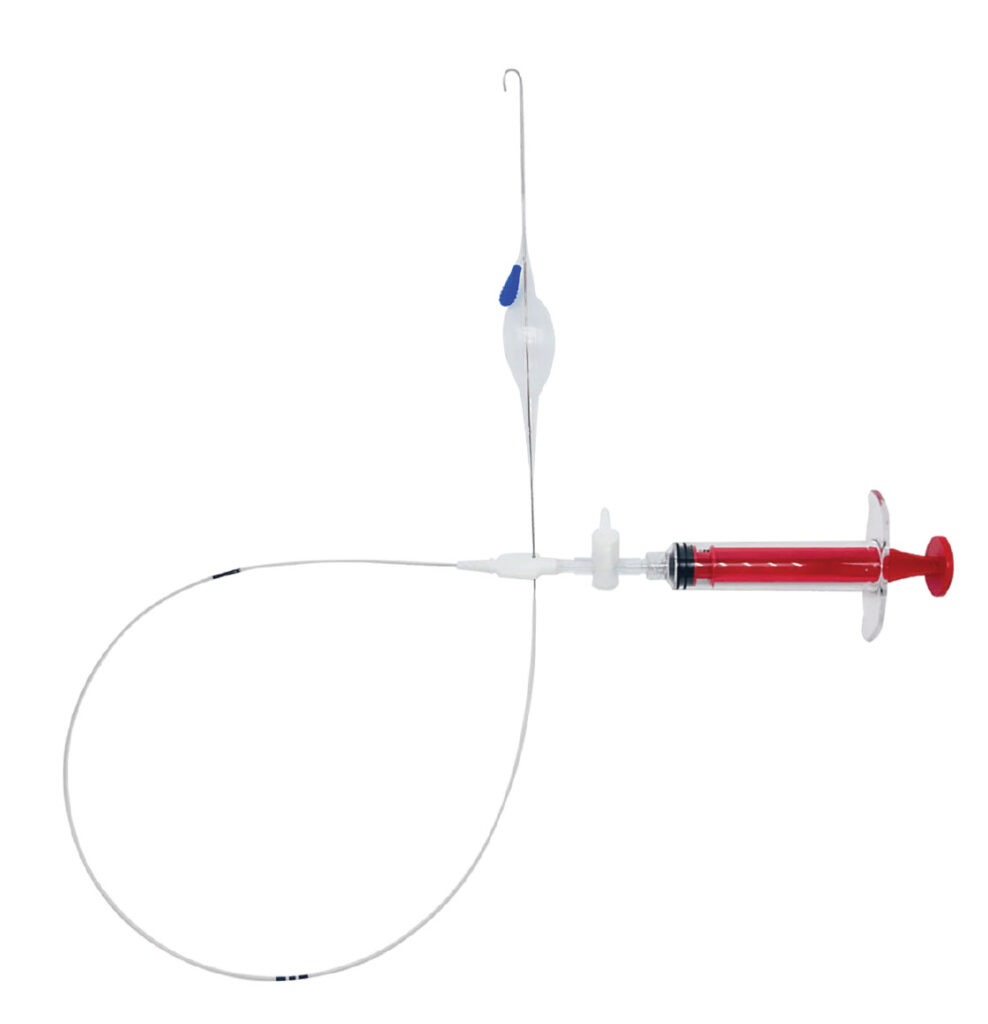Irrespective of how superior expertise might get, particularly in well being care environments, each new innovation comes down to at least one easy premise: You see an issue, and then you definately remedy that downside. And in most medtech instances, that answer is filled with years of next-level genius considering.
As is the case with Entrance Line Medical Applied sciences, maker of the progressive COBRA-OS (Management Of Bleeding, Resuscitation, Arterial Occlusion System), a tool that quickly blocks the aorta throughout emergency conditions. We turned to Asha Parekh, Ph.D., cofounder of Entrance Line and the biomedical engineer behind COBRA-OS, to search out out extra about this machine and the way forward for medtech.

Parekh says she and her co-founder Adam Energy, M.D., had the concept for COBRA-OS when she noticed there was no surefire option to get sufferers from level A to level B when they’re bleeding out. “The COBRA-OS offers circulatory assist in emergency conditions. It may be utilized in a wide range of functions,” Parekh says. “The intent is to maintain a affected person alive till they will get the definitive care they want…. So, it’s a short lived measure to maintain a affected person in good standing, whether or not that’s inside a hospital, from the ER to the OR, or it’s a motorized vehicle accident or on a navy battlefield.”
Saving Lives Past the Hospital
The machine has all kinds of functions and environments, in response to Parekh. It’s utilized by trauma surgeons, vascular surgeons, interventional radiologists, cardiologists and emergency physicians. So, it’s not simply one thing you’d want within the hospital. You may really want it in your method there.
“Sadly, for 1 out of 10 of these sufferers who are suffering from cardiac arrest exterior of a hospital, it’s not going that their coronary heart will even begin once more. They gained’t get the return of circulation,” she explains. “So, that is one utility the place we’re attempting to bridge that hole and provides sufferers an opportunity to even get to that definitive care.”
Recognizing the Want
In any business, the very best answer architects are those who’ve their eyes vast open. They see the issue, after which they discover the answer. Which is what Parekh and Energy did after they noticed affected person care.
“I used to be speaking to individuals who have been working with paramedics, ambulances, emergency rooms, and so they stated they have been simply grabbing for something attempting to make it work. There’s not likely been something they will do within the occasion of cardiac arrest different than simply carry on doing CPR,” she stated of the scientific want she stored seeing. “We noticed that there was a possibility to bridge these gaps in care and ask, ‘How can we make this higher?’”
Measuring Medical Success
Affected person outcomes are the first measure of a medical machine’s success, however components like feasibility, patentability and monetary advantages additionally outline medtech achievements. Launching a tool just like the COBRA-OS, a Class II machine with mid-level danger, begins with acquiring a license from the FDA or Well being Canada.
Parekh says that, as a result of the well being care business is so closely regulated, there aren’t any shortcuts. “We’ve got to ensure that the outcomes are favorable. However there’s a little little bit of a grey space as a result of our instrument is giving a affected person an opportunity at survival—after they’re already in a scenario the place they may die and you’re giving them a last-ditch effort generally.” The extent of damage varies, as do the folks. “There are pointers, nonetheless; when and on whom we must be doing this isn’t fully set or accepted but.”
Pioneering the Subsequent Era of MedTech
When Parekh was in her first yr of her undergraduate engineering research, she estimated that there have been 10% ladies. In graduate college, she says that jumped to about 20%. And, now, within the biomedical engineering lectures she’s given, she fortunately studies that lessons have been nearly 40% ladies. “Biomedical engineering, particularly, has gained a variety of traction for girls,” Parekh says.
The way in which she sees it, not everybody must be inspired into science, expertise, engineering and arithmetic (STEM) fields. “We have to create consciousness and produce out the eagerness in people who find themselves actually keen on it. That’s what’s going to drive the sector ahead. We will get the very best out of individuals after they actually like it,” she says, “and we wish folks like that to develop into their passions.”
That aligns with latest knowledge from the Bureau of Labor Statistics. Their projections are that STEM occupations will develop 10.4% between 2023 and 2033 (a a lot quicker price than the anticipated total workforce development of 4%).
However what’s driving all of it—the info, figures, consciousness—is a ardour for problem-solving.
There are all the time issues within the pipeline, says Parekh. Then it turns into a matter of too many issues and never sufficient time to unravel all of them. “We want we had time to work on each undertaking that we needed to,” she says. “COBRA-OS is a ardour undertaking. We actually, actually love, love, like it.”
This text initially appeared within the March/April 2025 problem of SUCCESS journal.
Photograph courtesy Asha Parekh, Ph.D.










Discussion about this post